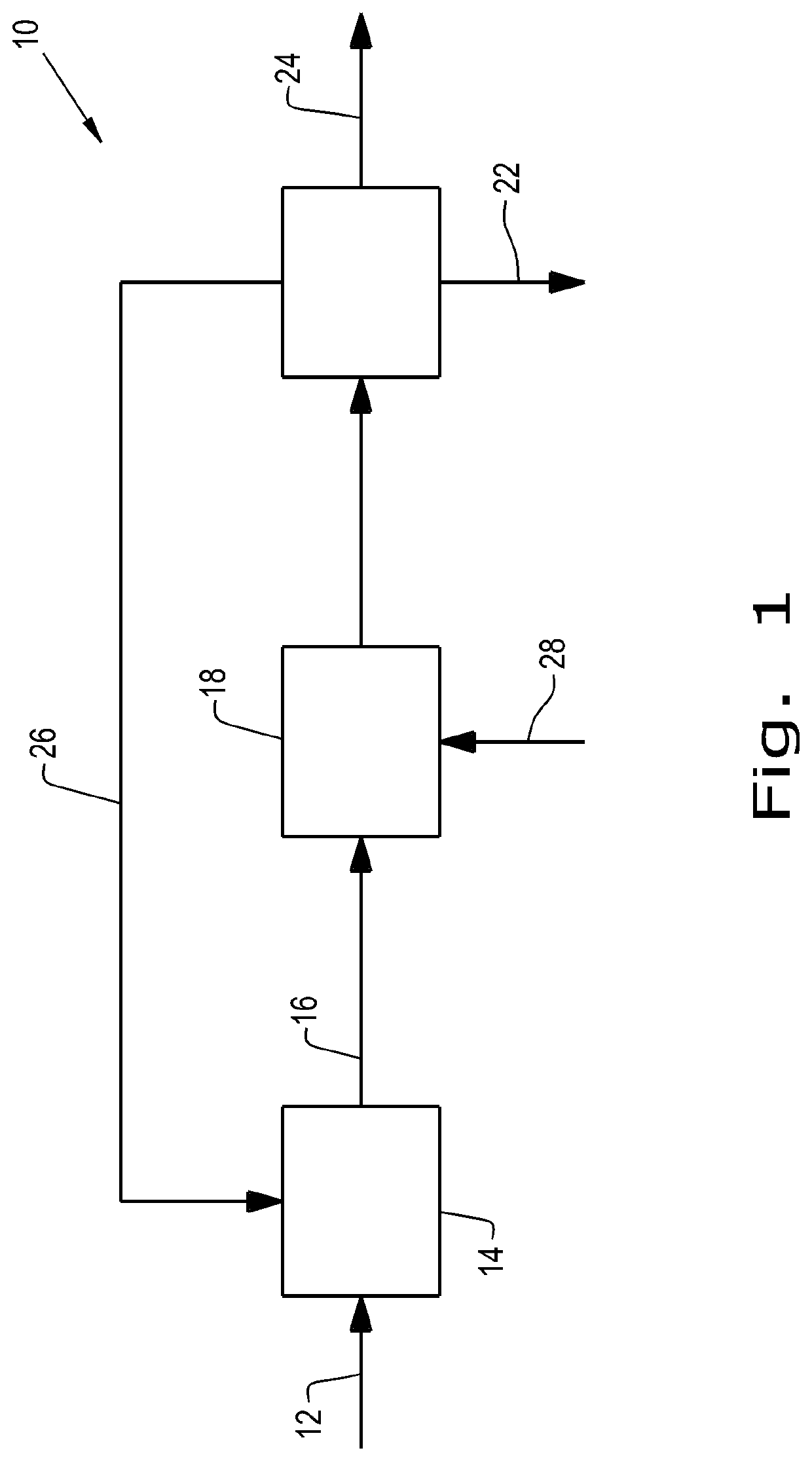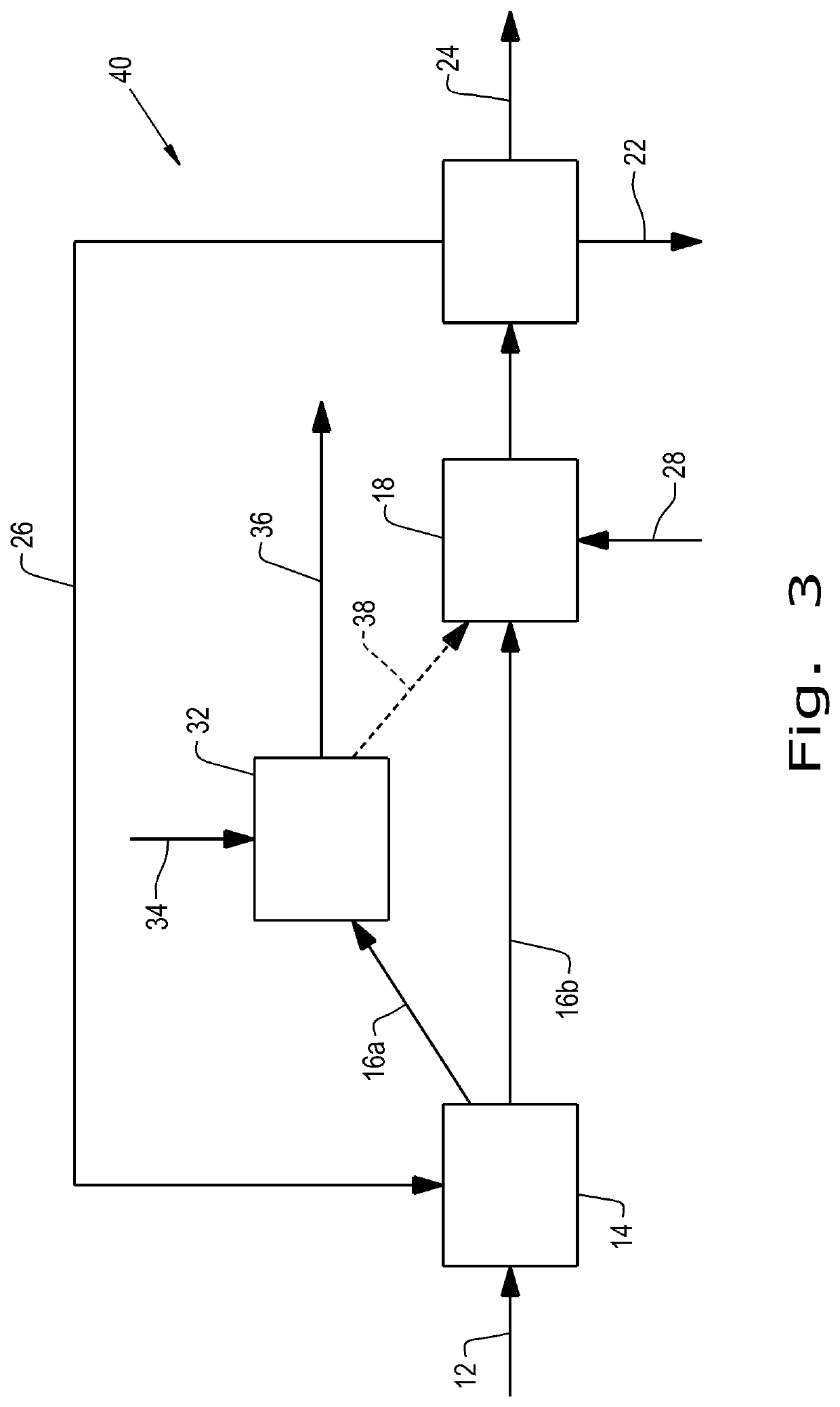Processes for producing 2,5-furandicarboxylic acid and derivatives thereof and polymers made therefrom
a technology of furanic acid and derivatives, which is applied in the direction of sustainable manufacturing/processing, physical/chemical process catalysts, organic compounds/hydrides/coordination complex catalysts, etc., can solve the problems of difficult recycling, inability to use in solution, and inability to achieve commercial-scale processes. achieve the effect of improving the yield of furanic species
- Summary
- Abstract
- Description
- Claims
- Application Information
AI Technical Summary
Benefits of technology
Problems solved by technology
Method used
Image
Examples
examples
[0105]The methods disclosed herein are illustrated in the following examples. From the above discussion and these examples, one skilled in the art can ascertain the essential characteristics of this invention, and without departing from the spirit and scope thereof, can make various changes and modifications of the invention to adapt it to various uses and conditions.
[0106]All commercial reagents were used as received. ACS grade glacial acetic acid was obtained from Fisher Scientific. All other chemicals were obtained from Sigma-Aldrich (St. Louis, Mo.) unless stated otherwise. Purified 5-(hydroxymethyl)furfural and 5-(acetoxymethyl)furfural as received for use in the oxidation reactions from Archer Daniels Midland Company for certain oxidation feeds (OF-c, OF-d and OF-e in Table 2 below) were synthesized and purified as more particularly described hereafter. 2,5-furan dicarboxylic acid (2,5-FDCA) was obtained from Sarchem Laboratories (Farmingdale, N.J.) in >99% purity. Oxidation i...
examples 1-4
roduction of FDCA in Acetic Acid as Solvent
[0121]The integrated process of making FDCA as disclosed herein below comprises the first step (1A) of dehydrating a sugar feed to produce an oxidation feed, with concentrating the crude feed without purification except filtration and followed by the step of oxidation of the as-produced oxidation feed to FDCA.
[0122]Step 1A: Production of Crude Oxidation Feed in Acetic Acid (OF-1 to OF-4)
[0123]Several oxidation feeds were generated first by combining glacial acetic acid (1182 g, 19.68 mol), aqueous hydrobromic acid solution (at an HBr concentration of 48 wt. % in water; 16.97 g, 0.101 mol), and a mixed fructose / glucose syrup (in a 97 / 3 ratio by weight of fructose to glucose, 76.88% dry solids basis in water, 1203 g) in a 2 liter Wheaton bottle. These materials were mixed at ambient temperature on a drum roller until homogeneous, then degassed in a sonicator. The concentration of the HBr relative to fructose and glucose was kept constant at 1...
PUM
| Property | Measurement | Unit |
|---|---|---|
| temperature | aaaaa | aaaaa |
| temperature | aaaaa | aaaaa |
| temperature | aaaaa | aaaaa |
Abstract
Description
Claims
Application Information
 Login to View More
Login to View More - R&D
- Intellectual Property
- Life Sciences
- Materials
- Tech Scout
- Unparalleled Data Quality
- Higher Quality Content
- 60% Fewer Hallucinations
Browse by: Latest US Patents, China's latest patents, Technical Efficacy Thesaurus, Application Domain, Technology Topic, Popular Technical Reports.
© 2025 PatSnap. All rights reserved.Legal|Privacy policy|Modern Slavery Act Transparency Statement|Sitemap|About US| Contact US: help@patsnap.com



